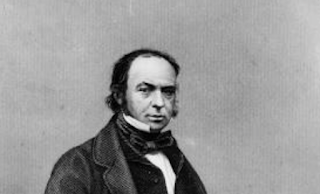Here's a biography of Isambard Kingdom, covering his life from birth to death:
Isambard Kingdom Brunel was a pioneering British engineer of the 19th century, known for his remarkable contributions to civil engineering, railways, and shipbuilding. He was born on April 9, 1806, in Portsmouth, England, and passed away on September 15, 1859, leaving behind a legacy of innovation and engineering marvels that endure to this day.
Isambard Kingdom Brunel was born into a family with a rich engineering heritage. His father, Sir Marc Isambard Brunel, was a respected engineer and inventor in his own right. Young Isambard received his early education in France, where he learned mathematics, engineering principles, and drawing.
In 1823, Brunel enrolled at the Henri-IV Polytechnic School in Paris, where he studied under some of the leading engineering minds of the time. His education provided him with a strong foundation in engineering and a deep appreciation for innovative solutions to complex problems.
Brunel's career was marked by a series of groundbreaking engineering projects that revolutionized transportation and infrastructure in the United Kingdom. Some of his most notable achievements include:
One of Brunel's earliest projects was his collaboration with his father on the Thames Tunnel, which was the first tunnel in the world to be constructed successfully beneath a navigable river. This engineering marvel, completed in 1843, employed innovative tunneling techniques and the use of a tunneling shield. It paved the way for modern underwater tunnel construction.
Brunel's contributions to the Great Western Railway were transformative. As the chief engineer of the railway, he designed a broad gauge track (wider than the standard gauge) and engineered the construction of numerous viaducts, tunnels, and bridges. The GWR, under his leadership, significantly improved travel between London and the West of England, revolutionizing railway transportation.
Brunel's ship, the SS Great Britain, launched in 1843, was a pioneering vessel that combined an iron hull, screw propeller, and advanced steam engine technology. It was the world's first ocean-going, propeller-driven iron ship, setting new standards for marine engineering.
The Clifton Suspension Bridge, spanning the Avon Gorge in Bristol, is one of Brunel's most iconic creations. Although it was completed after his death, his design and vision for the bridge came to fruition. The bridge's elegant and innovative design remains a symbol of Bristol and engineering excellence.
Brunel's final project, the SS Great Eastern, was an enormous steamship that pushed the boundaries of maritime engineering. It was the largest ship of its time and featured a double hull, a design that influenced later shipbuilding practices.
Isambard Kingdom Brunel's legacy is celebrated not only for his individual achievements but also for the lasting impact of his innovative engineering solutions. He was a visionary engineer who pushed the boundaries of what was thought possible in his era. His projects set new standards for construction, transportation, and engineering.
Brunel's work continues to influence modern engineering practices and has left an indelible mark on the infrastructure of the United Kingdom. Many of his creations, such as the Clifton Suspension Bridge and the Great Western Railway, remain in use and serve as enduring testaments to his engineering brilliance.
In recognition of his contributions to engineering and his lasting legacy, Isambard Kingdom Brunel is often regarded as one of the greatest engineers in history. His innovative spirit and commitment to pushing the boundaries of technology continue to inspire engineers and innovators worldwide.


